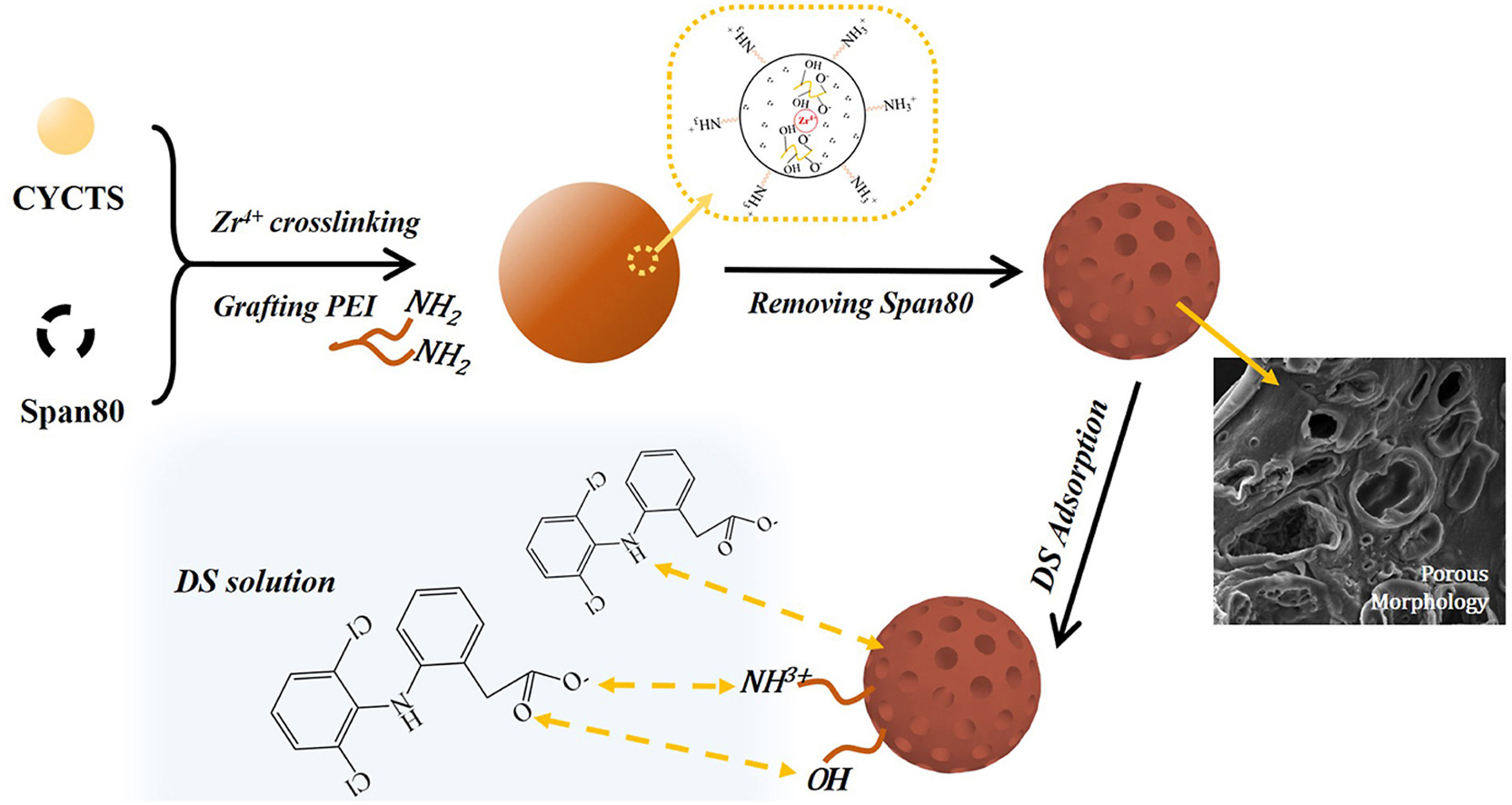Fabrication of porous polyethyleneimine-functionalized chitosan/Span 80 microspheres for adsorption of diclofenac sodium from aqueous solutions

Porous surface-modified microspheres can have widespread applications in the removal of wastewater pollutants. In this study, using a nonionic surfactant (Span80) as the pore-forming agent and Zr4+ as the cross-linking agent, polyethyleneimine (PEI)-modified porous CYCTS/Span80 microspheres ((CYCTS/Span80)-@-PEI) were successfully prepared for the adsorptive removal of diclofenac sodium (DS) from wastewater.
Highlights
- ((CYCTS/Span80)-@-PEI) microspheres were successfully crosslinked by Zr4+, and the pores were prepared by using Span80.
The maximum adsorption capacity of the porous ((CYCTS/Span80)-@-PEI) microspheres for diclofenac sodium is 572.67 mg/g.
The porous structure of the ((CYCTS/Span80)-@-PEI) microspheres participated in the adsorption of diclofenac sodium.
The adsorption process follows the pseudo-second order kinetic model and the Langmuir adsorption isotherm model.
The adsorbent was characterized using Fourier-transform infrared spectroscopy, energy-dispersive X-ray spectrometry, scanning electron microscopy, and X-ray diffractometry. The activity of the porous (CYCTS/Span80)-@-PEI microspheres as adsorbents of DS was investigated by varying the experimental parameters (i.e., adsorbent dosage, adsorbent ratio, pH, contact time, temperature, and pollutant concentration). A possible adsorption mechanism was also discussed. The experimental results showed that the adsorption process followed a pseudo-second order kinetic model and the Langmuir adsorption isotherm model, in addition to the Freundlich isotherm model, indicating that the porous structure allowed multi-layer adsorption.
Adsorption equilibrium was reached after 240 min at pH 5 and 303 K, yielding a maximum adsorption capacity of 572.67 mg/g. After five adsorption cycles, the removal rate of DS remained >80%, and the recovery rate was high. Therefore, we concluded that the porous (CYCTS/Span80)-@-PEI microspheres are efficient and inexpensive candidates for the removal of DS from wastewater.
Article information: Fangyuan Jiang, Dachao Zhang, Xiao-kun Ouyang, Li-Ye Yang. Sustainable Chemistry and Pharmacy, Volume 21, 2021. https://doi.org/10.1016/j.scp.2021.100418.

